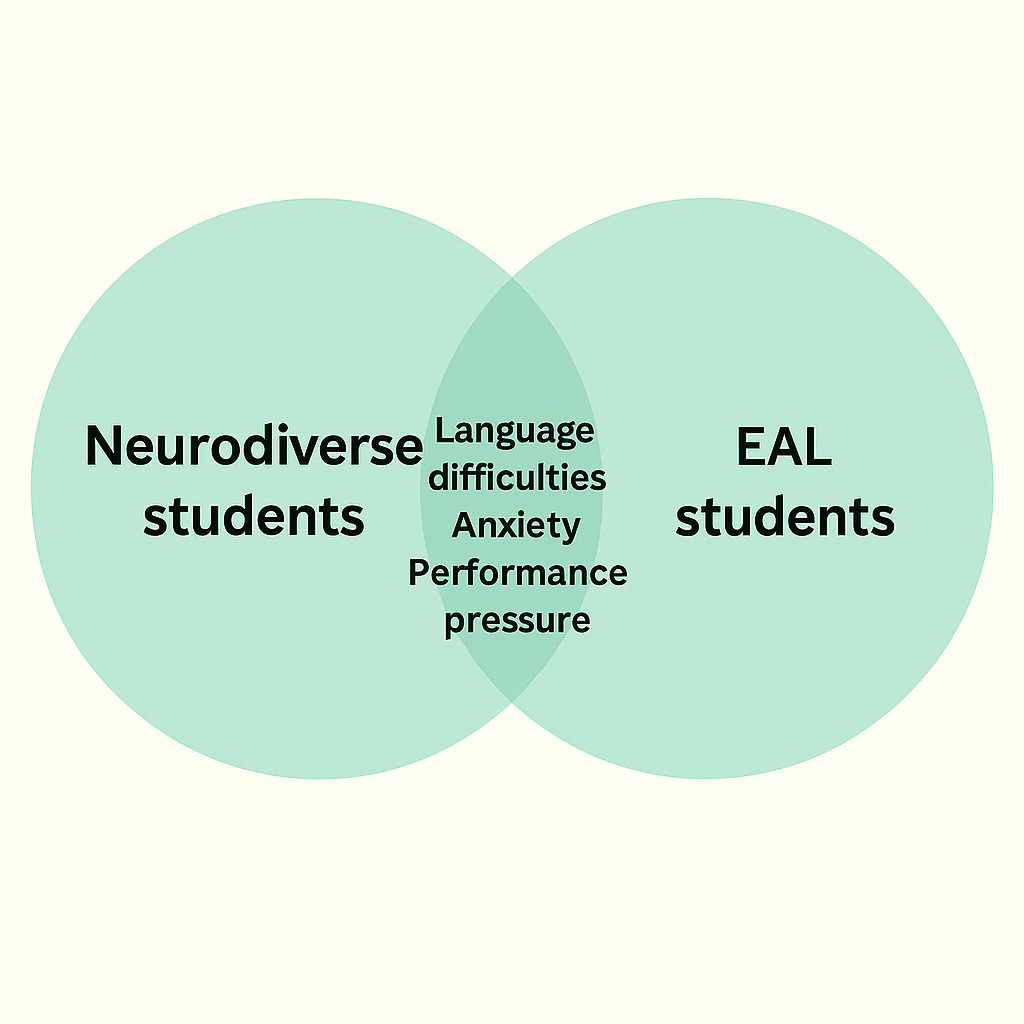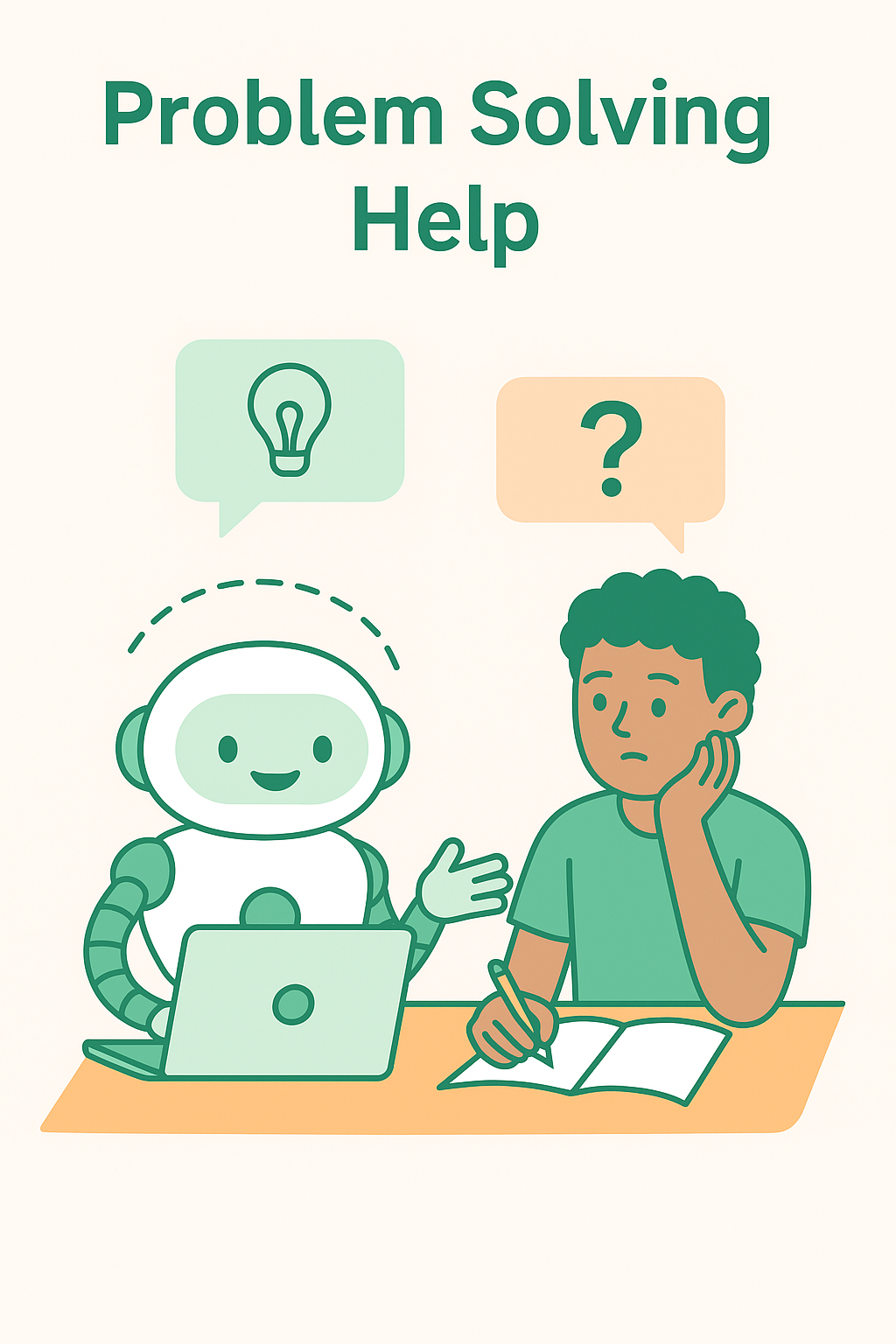Ai4unidiversity is an innovative interdisciplinary project investigating the scaffolding role AI plays in the context of diverse student populations, aiming to raise diversity, equality and inclusion in Higher Education (HE) contexts (Dwyer & Waisman, 2023).
The rapid integration of Artificial Intelligence (AI) into HE practices provides an unprecedented opportunity to investigate its benefits for diverse student populations.
The notion of scaffolding describes learners’ transition from lower to higher levels of competencies through the support of either peers or tools (Shvarts & Bakker, 2019; Vygotsky, 2012). The idea behind Ai4unidiversity is that AI can provide such scaffolding to support HE students, particularly those with diverse learner profiles.
The goal is to narrow the gap between diverse and typical students regarding performance levels and well-being
The goal is to narrow the gap between diverse and typical students regarding performance levels and well-being. Ai4unidiversity focuses on two aspects of diversity: (1) neurodiversity and (2) linguistic diversity, notably students for whom English is an additional language EAL.
1: Neurodiversity
Neurodiversity is defined as natural variation in cognitive processing, including phenomena such as dyslexia, autism spectrum disorder, or attention deficit disorders. With 1 in 7 UK adults being neurodiverse, the percentage amongst HE students may be high (Celebrating neurodiversity in Higher Education | BPS).
Recent studies suggest that neurodiverse students face challenges due to impairments to language and literacy skills, emotion regulation, and attentional abilities. This may affect academic performance, as well as wellbeing and stress levels (Allan & Coney, 2019). In the long run, it may also affect employability.
Ai4unidiversity raises the question how HE institutions can optimize inclusivity by mitigating the effects of neurodivergence using AI (Hamilton & Petty, 2023). Recent research on AI, neurodiversity, and inclusion suggests that AI can be used productively with neurodiverse populations but that appropriate didactic guidance needs to be developed (Eze & Verma, 2021; Clark, 2023; Spiel & Good, 2022).
2: Linguistic diversity
As a result of global mobility, HE institutions cater for increasing numbers of EAL students. They share many of the challenges faced by neurodiverse students.
Proficiency in the English language is an important predictor of academic outcomes, especially in subjects based on written assignments (Hessel & Strand, 2023).
Moreover, EAL students suffer from increased levels of stress (Alharbi & Smith, 2018), partially due to foreign language anxiety (Horwitz & Luo, 2010). Generative AI systems, such as ChatGTP, as well as automatic translation systems, such as Google Translate, may boost EAL students’ performance, and reduce foreign language stress.
The goal of Ai4unidiversity is two-fold. Firstly, we explore how AI may support diverse students regarding problem-solving, decision-making and academic writing skills.
The challenge for HE relies in developing guidance and activities that allow diverse students to use AI systems responsibly to scaffold their performance, without merely copying AI output.
The usage of AI therefore inevitably involves the development of AI literacy and critical thinking about AI (Long & Magerko, 2020). Secondly, we investigate whether the usage of AI during tasks reduces perceived and objective stress levels.
Project methods
Methodologically, Ai4unidiversity takes a multi-method approach drawing upon both qualitative and quantitative methods. In order to co-create the scaffolded activities, we explore, with students, the role of AI in preparing assignments, the way they adopt tools, and what challenges they have.
Then, we test if these activities help students to achieve the desired task outcomes, and reduce their stress levels. The project will consist of three stages.
Stage 1
During Stage 1, we assess student needs and current usage of AI. The goal is to identify unique challenges, opportunities, effectiveness, and shortcomings of AI tools. The method will be anonymous surveys and in-depth interviews with students who self-identify as diverse.
Stage 2
Stage 2 assesses the effects of AI usage on performance and perceived and objective stress levels. The goal is to compare task performance in relation to academic standards, and measure perceived self-report stress and objective stress assessment (using self-reported heart rate monitoring).
Our method will be experimental, involving tasks tapping into problem-solving, creativity, decision-making, writing skills, and critical thinking. The third stage will consist of developing future recommendations, and populate the Ai4unidiversity website with AI-related recommendations for diverse students, project findings, as well as links to useful HE tools.
Project impact
The main objective of Ai4unidiversity is to help all students achieve their academic goals by providing them with the tools and guidance that are sustainable, inclusive and suitable for all students, regardless of their background.
Based on the exploration and findings of the current project, a range of resources will be created in order to develop prompts for using generative AI solutions that will help diverse students use AI ethically as a scaffolder to tackle academic problems and activities. Hence, the implementation of the recommendations resulting from Ai4unidiversity fosters inclusivity at the Northeastern global university system, and beyond.
Moreover, at the core of Ai4unidiversity exploration is student voice, as we will consult students regarding their experiences, challenges and needs related to using AI for learning purposes.
This active involvement will increase students’ sense of belonging to NU and highlight the importance of students’ role in collaboration in the development of teaching and learning resources.
By enhancing AI literacy, goal-oriented thinking and planning skills in neurodiverse and EAL students, Ai4unidiversity improves employability amongst diverse students
Finally, by enhancing AI literacy, goal-oriented thinking and planning skills in neurodiverse and EAL students, Ai4unidiversity improves employability amongst diverse students. For example, a recent survey in the corporate sector shows that 100% of companies use AI in their daily operations (Business Cloud, 2024). This will influence AI-related policies in HE.
References
Allen, M., & Coney, K. (2019). What happens next? 2019: a report on the first destinations of 2016/17 disabled graduates. The Associate of Graduate Careers Advisory Services. Available at: https://www.agcas.org.uk/Latest/launch-of-what-happens-next-2019
Alharbi, E., & Smith, A. (2018). A review of the literature on stress and wellbeing among international students in English-speaking countries. International Education Studies, 11(5), 22-44.
Business Cloud. (2024). 2024 Edtech Insights report: Is AI good for education? https://businesscloud.co.uk/news/2024-edtech-insights-report-is-ai-good-for-education/
British Psychological Society. (n.d.). Celebrating neurodiversity in Higher Education. https://www.bps.org.uk/news-and-policy/celebrating-neurodiversity-higher-education
Eze, I. E., Shukla, V. K., & Verma, A. (2021). Diversity and Inclusion Through Technological Trends. Creating a Culture of Diversity and Inclusiveness in India Inc. Practitioners Speak, 135-156.
Clark, M. (2023). AI, Generative Production, & Accessibility. Teaching and Learning at Cleveland State University.
Dwyer, P., Mineo, E., Mifsud, K., Lindholm, C., Gurba, A., & Waisman, T. C. (2023). Building neurodiversity-inclusive postsecondary campuses: recommendations for leaders in higher education. Autism in Adulthood, 5(1), 1-14.
Hamilton, L. G., & Petty, S. (2023). Compassionate pedagogy for neurodiversity in higher education: A conceptual analysis. Frontiers in psychology, 14, 1093290.
Hessel, A. K., & Strand, S. (2023). Proficiency in English is a better predictor of educational achievement than English as an Additional Language (EAL). Educational Review, 75, 763-786.
Horwitz, E. K., Tallon, M., & Luo, H. (2010). Foreign language anxiety. Anxiety in schools: The causes, consequences, and solutions for academic anxieties, 2, 96-115.
Long, D., & Magerko, B. (2020, April). What is AI literacy? Competencies and design considerations. In Proceedings of the 2020 CHI conference on human factors in computing systems (pp. 1-16).
Shvarts, A., & Bakker, A. (2019). The early history of the scaffolding metaphor: Bernstein, Luria, Vygotsky, and before. Mind, Culture, and Activity, 26(1), 4-23.
Spiel, K., Hornecker, E., Williams, R. M., & Good, J. (2022, April). ADHD and technology research–investigated by neurodiverse readers. In Proceedings of the 2022 CHI Conference on Human Factors in Computing Systems (pp. 1-21).
Vygotsky, L. S. (2012). Thought and language. MIT press.

